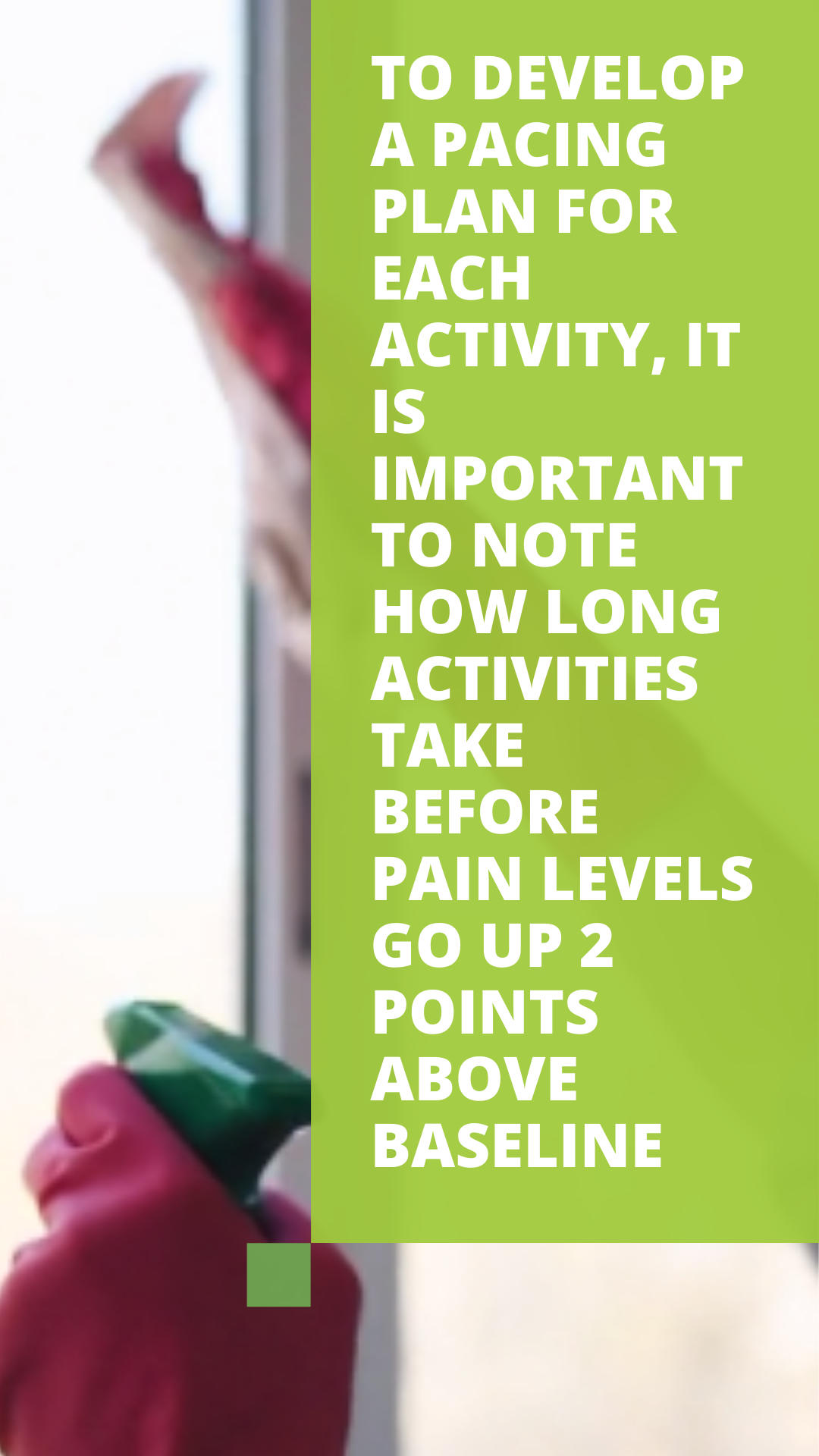
A blog post by Sonia Sharma, HBSc, MScOT, OT Reg. (Ont.)
Due to various conditions such as chronic pain, heart conditions, shortness of breath, and fatigue, many individuals find it difficult to find the energy to complete activities of daily living. By conserving energy and maintaining a balance between productivity, rest, and leisure, one can learn to reduce the amount of energy demand on their body.
Often times, pain fluctuates throughout the day. In response to periods of decreased pain, many individuals will often compensate for the things they were unable to complete during a high pain episode and overwork their body. By pushing the body beyond what it is physically capable of, pain increases over its normal level and may lead to muscle spams, inflammation, nerve irritation, other many other symptoms. These pain flares sensitize your nervous system to feel more pain for less activity and gives the idea that “pushing through” or “stopping all things completely” is the best option. It is vital to stop this recurring pattern of inactivity and over-activity by being able to break down everyday activities and determine when pain has increased by a point or two above baseline (on a 10-point scale). Once an increase is noticed, activity should be stopped or changed. By consistently pacing the body throughout the day, the body can recover more effectively, experience less pain flares, reduce future pain, and help you feel more control of your life.

Time yourself while doing an activity and notice when pain levels increase!
How to Develop an Effective Pacing Plan
To develop a pacing plan for each activity, it is important to note how long activities take before pain levels go up 2 points above baseline. Time yourself while doing an activity and notice when pain levels increase (e.g. you may notice that when you are folding clothes for 10 minutes, pain levels go from a 6 to an 8). Ten minutes is your “uptime” limit for this activity/the amount of time you should spend on this task. To bring pain levels down, engage in a relaxing activity such as reading or calling a friend and time how long it takes for pain levels to return to baseline. This new time is your “downtime” requirement. Once this strategy is applied consistently for activities, the body will naturally be able to tolerate a longer period of time working (higher uptime) and require a smaller resting period (lower downtime).
Challenges
Often times, individuals who experience pain also undergo significant psycho-emotional changes. Activities which result in pain are feared and lead to muscle tension, anxiety, fatigue, stress, and individuals no longer have interest in activities. It is important to distinguish between high pain levels and increased emotional distress as many categorize both feelings under “pain”. Many individuals avoid activities due to pain it brings along with it. By applying pacing, individuals can move away from a pain-contingent approach and utilize a time-contingent approach.
Another common challenge is that individuals may feel as if their goals are “not worth it”. For example, someone may have a goal to run but can only engage in walking for 5 minutes at a time. It is important to set realistic goals and to note when the body is deconditioned, making brief periods of activity exhausting and painful.
Realistic Goal Setting
To set realistic goals which can lead to effective pacing and reconditioning schedules, reviewing the following questions is beneficial:
1. Can this goal realistically be achieved?
Can this goal be achieved based on the level of pain experienced and learned pain management strategies?
2. When should the goal be completed?It is a good idea to set a deadline or target date to increase motivation. Dates can be changed if required.
3. Is the goal measurable?
How will you determine if the goal has been reached? (e.g. minutes spent doing an activity, number of activities performed each week)
4. Is the goal broken down into small manageable parts?
It is important to start off from a point which is easy to complete and gradually increase the complexity from there. By building a challenge gradually, successes are obtained more often and provide a drive to keep going
5. Is the goal “I” focused
Are you engaging in the task yourself?
6. Will accomplishments be rewarded?
Rewarding your successes lead to more chances of re-engaging in the activity.
7. Is the goal meaningful?
Is the outcome of the goal something you desire? Caring about a goal makes you more likely to strive towards it.
8. Is a relapse plan established?
If a goal is not reached, how will you start again?
References:
MM
Pacing and Goal Setting – Pain Management. (2020). Retrieved June 29, 2020, from https://painhealth.csse.uwa.edu.au/pain-module/pacing-and-goal-setting/
Toolkit for Patient Education on Management of Chronic Pain (n.d.). Pacing Yourself [PDF file]. Retrieved from https://www.sdsma.org/docs/pdfs new_site/Advocacy/Opioid_Pages/ pacingyourself.pdf
Images:
https://www.pngitem.com/middle/hwhmwJx_calendar-schedule-png-icon-transparent-png/
http://clipart-library.com/fatigue-cliparts.html
https://webstockreview.net/explore/planning-clipart-plan-action/

